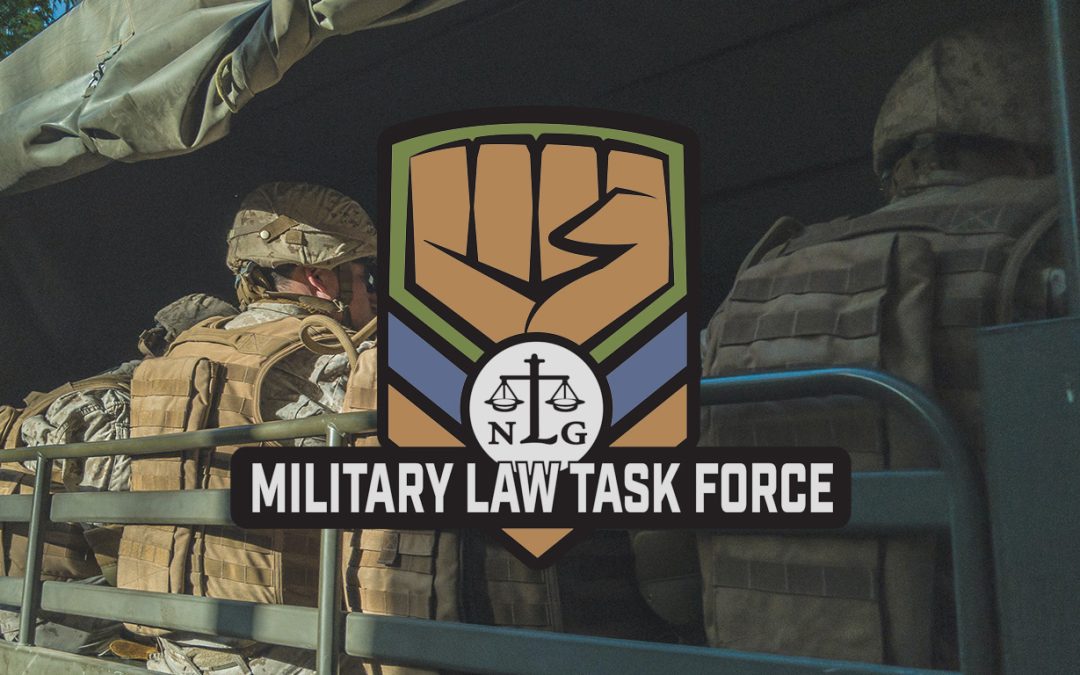By Teresa Panepinto
Part I
The Individual Ready Reserves (IRR) play an increasingly important role in the military’s total force strength, as the military has faced a personnel shortfall as a result of its “War on Terror.” Over 6,000 members of the IRR have been involuntarily called to active duty.
Collectively, as counselors and attorneys working with GIs, we don’t possess much knowledge of the IRR. This is an area that requires much in depth research. As we counsel more and more IRR members, the collective knowledge of this area will grow. In the meantime, this article is intended to provide a basic understanding of the IRR, to serve as a starting point for learning more about it.
The information provided is based almost exclusively on military regulation; unfortunately, information on current military practices is largely unknown by the author. It is also important to note that there may be differences in the handling of IRR cases between each branch of the military.
What is the IRR, and who are its members?
The IRR is part of the Ready Reserves. Its members are not assigned to a unit and do not participate in regular drills. Members of the IRR can be involuntarily called to active duty.
The following types of servicemembers make up the IRR:
Those separating from active duty who still have a remaining military service obligation (MSO)
Those separating from the Selected Reserve who still have a remaining MSO
Those enlisted in the DEP or DTP who have yet to report to active duty
Those with no prior service awaiting training before beginning service in either an active component (e.g. Regular Army) or the Selected Reserve
Those awaiting basic training before beginning service in the Selected Reserve who are not authorized to attend drills
Those participating in certain officer training programs
Participants in Armed Forces Health Professions Financial Assistance Programs (e.g. AFHPSP)
Those leaving active duty or the Selected Reserve, who have fulfilled their MSO, and are eligible for and wish to be a part of the Ready Reserve
What are the obligations of IRR members?
Members of the IRR need to be immediately available for mobilization. Upon activation, members have between 5 and 15 days’ notice to report for active duty. In addition, all IRR members are required to participate in their branch of service’s annual screening process. Also, according to regulation, all members may be required to serve up to 30 days of active duty (AD) each year.
Do members of the IRR receive pay for their service?
Some members do receive pay. There are three different types of pay programs:
Voluntary Separation Incentive: payments are made on an annual basis, for an established number of years, contingent on the member’s continued membership in the IRR or another Reserve component.
Special Separation Benefit: requires the member to serve in the IRR or other part of the Ready Reserve for at least three years after one’s MSO has been fulfilled.
Separation Pay Program: requires the member to serve in the IRR or other part of the Ready Reserve for at least three years after one’s MSO has been fulfilled.
Receiving pay as a member of the IRR does not change one’s right to request delay or exemption from active duty, request a discharge, etc.
Those members of the IRR who are called to active duty are paid for their active duty service.
When are IRR members subject to the UCMJ?
Members of the IRR are only subject to the UCMJ under the following circumstances:
If called to active duty (AD). In the Navy, and potentially in other branches as well, this means that from the moment one leaves home, enroute to report for active duty, one is subject to the UCMJ.
While on inactive duty training (IDT), including muster duty.
If made the subject of Article 15 or Article 30 proceedings, and called to active duty for the purpose of dealing with these proceedings (e.g. trial by court-martial).
Annual screening
Annual screening for IRR members happens either with a questionnaire sent through the mail, or through muster duty. Muster duty involves reporting to a military installation for up to one day of service, during which time the military gets up to date on each member’s “physical condition, dependency status, military qualifications, civilian occupational skills, availability for service, and other information.” IRR members may be involuntarily called to report to muster duty; it is considered to be inactive duty training (IDT).
In addition to the annual screening, according to DoDD 1235.13, every IRR member is to be given a physical fitness exam once every five years.
Unsatisfactory Participation in the IRR
Members of the IRR have two main requirements: the obligation to respond via mail to the annual screening questionnaire and/or report for muster duty; and to keep the military informed of any change in address, marital or dependent status, civilian employment or physical condition that occurs in between annual screenings. If a member fails to meet these two requirements, s/he could be declared an unsatisfactory participant.
If an IRR member who has NOT completed her/his MSO is declared an unsatisfactory participant, the servicemember faces one of three consequences:
Involuntary call to active duty training (ADT) for a period not to exceed 45 days
Transfer to the Standby Reserve or retained in the IRR if the branch of service determines the member “still possesses the potential for useful service if mobilized,” with a tentative OTH characterization to be given at the end of one’s MSO
Discharge for Unsatisfactory Participation (usually resulting in an OTH) if the branch of service determines the member has “no potential for useful service if mobilized.”
If an IRR member who has completed her/his MSO is declared an unsatisfactory participant, s/he will be processed for a discharge (unless the person applies for a transfer to the Standby or Retired Reserve).
Selected regulations pertinent to members of the IRR:
DoD Directive 1200.7, Screening the Ready Reserve, November 18, 1999, Certified current as of November 21, 2003
DoD Instruction 1215.18, Reserve Component Member Participation Requirements, July 17, 2002
DoD Directive 1235.13, Management of the Individual Ready Reserve (IRR) and the Inactive National Guard (ING), July 16, 2005
DoD Instruction 1235.14, Administration and Management of the Individual Ready Reserve (IRR) and the Inactive National Guard (ING), October 31, 1997
PDF version: Individual Ready Reserves Memo



